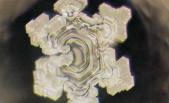

| ***Before Continuing on this page, it is recommended that you read the Masaru Emoto page, and watch this video*** |
If you're anything like me, you're very skeptical of Masaru Emoto's
research. So, I decided to try the experiment mentioned in the video.
On this page you will learn how to write an experiment (lab) report
using the widely-known Scientific Method, and you will learn my own
results from the experiment.
Question: The question asks what you are trying to discover from your
experiment.
Hypothesis: A hypothesis is a prediction (educated guess) at what the
result of the experiment will be.
Materials: Materials list all the supplies which will be needed to
complete the experiment
Procedures: Procedures are a detailed list of instructions for
performing the experiment. Procedures should be detailed enough so
that anyone can recreate your experiment with ease.
Observations/Data: Observations/Data show all the information you
collected during your experiment; including pictures, results, and
anything else you observed/noticed.
Results and Analysis: Here, you describe the outcome of your
experiment when it's finished.
Conclusion: Your conclusion is a review of the experiment, including
how it related to your hypothesis (prediction) and any variables which
could have affected the experiment.
Question: Can thoughts and words affect water inside plastic bottles?
Hypothesis: If words and thoughts are directed at water inside plastic
bottles, it will be demonstrated that positive and negative
words/thoughts can affect water.
Materials:
•Three 500mL water bottles or jars.
•Approximately 600mL or 750mL of rice.
•Small Funnel
•Felt pen
Optional:
•Music Player (preferably portable)
•Speakers or headphones
•Classical and heavy metal music on music player
•Ice tray
•Freezer
Procedures:
1. Use three 500mL water bottles. Empty each one to approximately
200mL. Optionally, save the water in another container for future use.
2. Using the funnel, add approximately 200 or 250mL of rice to each
water bottle.
3. Place caps on water bottles.
4. Using the felt pen, write "Love" on one water bottle, and "Hate" on
the other bottle. Do not write anything on the last bottle; it will remain
as a neutral control.
5. Place the three bottles about 30cm apart in a room in which the
temperature will remain the same and the bottles will be relatively
undisturbed.
6. Once every day, say "I love you" to the first bottle, ignore the
control, and say "I hate you" to the third bottle.
7. Optionally, after 1 week, play classical music in front of the first
bottle and heavy metal in front of the other one. Once more, ignore
the control.
8. After two weeks (or one month), observe the bottles. Note any
changes or differences between the bottles.
9. Optionally - when finished, place water in ice tray. Be sure to keep
the water from the three different bottles separated.
10. Place ice tray in freezer for three hours.
11. Remove ice tray from freezer and observe ice. Note any
observations and differences.
research. So, I decided to try the experiment mentioned in the video.
On this page you will learn how to write an experiment (lab) report
using the widely-known Scientific Method, and you will learn my own
results from the experiment.
Question: The question asks what you are trying to discover from your
experiment.
Hypothesis: A hypothesis is a prediction (educated guess) at what the
result of the experiment will be.
Materials: Materials list all the supplies which will be needed to
complete the experiment
Procedures: Procedures are a detailed list of instructions for
performing the experiment. Procedures should be detailed enough so
that anyone can recreate your experiment with ease.
Observations/Data: Observations/Data show all the information you
collected during your experiment; including pictures, results, and
anything else you observed/noticed.
Results and Analysis: Here, you describe the outcome of your
experiment when it's finished.
Conclusion: Your conclusion is a review of the experiment, including
how it related to your hypothesis (prediction) and any variables which
could have affected the experiment.
Question: Can thoughts and words affect water inside plastic bottles?
Hypothesis: If words and thoughts are directed at water inside plastic
bottles, it will be demonstrated that positive and negative
words/thoughts can affect water.
Materials:
•Three 500mL water bottles or jars.
•Approximately 600mL or 750mL of rice.
•Small Funnel
•Felt pen
Optional:
•Music Player (preferably portable)
•Speakers or headphones
•Classical and heavy metal music on music player
•Ice tray
•Freezer
Procedures:
1. Use three 500mL water bottles. Empty each one to approximately
200mL. Optionally, save the water in another container for future use.
2. Using the funnel, add approximately 200 or 250mL of rice to each
water bottle.
3. Place caps on water bottles.
4. Using the felt pen, write "Love" on one water bottle, and "Hate" on
the other bottle. Do not write anything on the last bottle; it will remain
as a neutral control.
5. Place the three bottles about 30cm apart in a room in which the
temperature will remain the same and the bottles will be relatively
undisturbed.
6. Once every day, say "I love you" to the first bottle, ignore the
control, and say "I hate you" to the third bottle.
7. Optionally, after 1 week, play classical music in front of the first
bottle and heavy metal in front of the other one. Once more, ignore
the control.
8. After two weeks (or one month), observe the bottles. Note any
changes or differences between the bottles.
9. Optionally - when finished, place water in ice tray. Be sure to keep
the water from the three different bottles separated.
10. Place ice tray in freezer for three hours.
11. Remove ice tray from freezer and observe ice. Note any
observations and differences.
The Experiment
| Portal | Home | Information | QuickFacts | Links | Privacy © 2008-2010 H2O - CONTACT WEBMASTER REGARDING THIS SITE |
Mozart Music
This image shows a crystal
from water which was exposed
to music composed by Mozart.
Will the results of this
experiment be similar?
This image shows a crystal
from water which was exposed
to music composed by Mozart.
Will the results of this
experiment be similar?
Masaru Emoto
Masaru Emoto is the Japanese
researcher who began studying
water crystals. Click here to
learn more.
Click here for images' source.
Images are copyrighted and were
reprinted with written permission.
Masaru Emoto is the Japanese
researcher who began studying
water crystals. Click here to
learn more.
Click here for images' source.
Images are copyrighted and were
reprinted with written permission.
Masaru Emoto - Experiment


